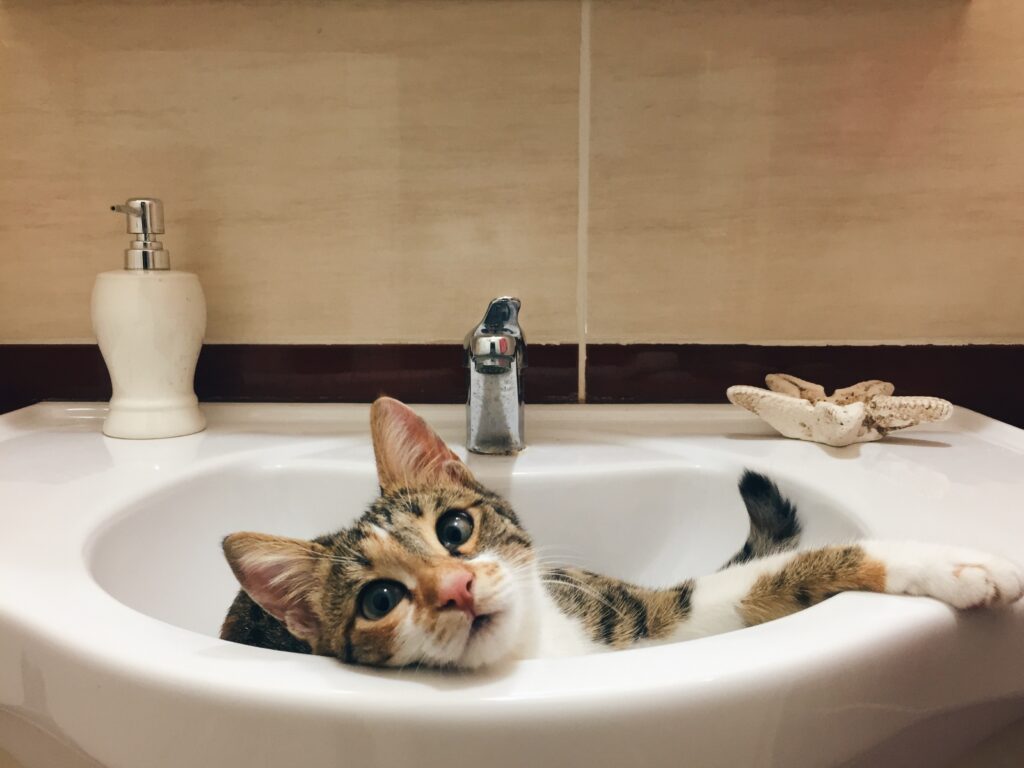It’s possible that your cat has a flea problem if you detect itching, grooming, and biting itself indefinitely. You could be inclined to shave your cat’s fur to aid with the problem, depending on the type of fur your cat has. However, this is not the best way to deal with your flea infestation.
You can shave your cat to get rid of fleas, although most vets advise against it. This is because, without additional measures, it does not guarantee that the flea problem will be solved. To get the best results, utilize flea medications, give your cat flea baths, and clean and vacuum your house to make it flea-proof.
Why isn’t it a good idea to shave to get rid of fleas?
The life cycle of the flea is one of the reasons why shaving is not particularly ineffective. Adult fleas have enormous egg layers and can lay up to 50 eggs every day, encouraging flea growth. Even if you are able to get rid of the most prominent adult fleas, the problem will not go away altogether. The infection will remain while the eggs are waiting to hatch.
The ideal method is to use a mix of bathing and a topical flea medication to eliminate both adult fleas and their eggs. These treatments are made to get rid of fleas at all phases of life and to get free of them completely. Furthermore, shaving can make your pet fearful, creating stress and mistrust in the relationship. When you notice flea symptoms, you don’t have to shave right away because there are more effective solutions.
How can a cat get rid of fleas without shaving?
The flea’s dream habitat is your cat’s warm, cute coat and nourishing blood supply. Flea barriers will prevent these little pests from entering your pet. There are numerous options for getting rid of them:
Your cat will benefit from a flea bath

Flea baths are efficient at removing fleas, but you must correctly introduce it to your cat because most cats dislike bathing. Protect your cat’s ears from cotton balls and feed them from time to time while your cat is playing or after a meal. Flea shampoo should be used to assist you get rid of fleas.
Flea collars for your cat
These are some of the most effective and simple flea-removal accessories. They’re worn like conventional cat collars, but they’re laced with chemicals that kill fleas and their eggs. The effect lasts about thirty days, and your cat cannot be infected with fleas during that time.
Groom your cat with flea combs
Flea combs with Bristles close to each other do a great job of getting rid of fleas. It’s great if you use warm soapy water with it. The most efficient method is to soak it in water and then comb it into the fur, allowing the eggs and fleas to adhere to it. Make sure you don’t disrupt the cat’s hair follicles because this can be irritating and uncomfortable.
Clean the house with a vacuum cleaner on a regular basis
To suck up eggs before they hatch, use vacuum cleaner, clean carpets, cushioned furniture, and holes and crevices in the floor. You’ll also get rid of live fleas this way. When you’re finished, make sure to discard the vacuum bag or wash the canister in warm, soapy water. Remove any bedding, sofa coverings, and other clothing that your pet has gotten into and throw them in the washing machine right away. To avoid bugs in the washing machine, use warm water.
Apply topical remedies to your cat
Traditional dust, shampoos, and sprays are replaced by spot-on treatments that are safer, easier, and more effective. You can get them from your veterinarian or get them online. Inquire with your veterinarian about how to apply the product to your cat, how much to use, and how often to use it. If you are not receiving treatment from a veterinarian, check the product label to ensure that it is safe for cats.
Shampoos with anti-flea ingredients
There are a variety of flea-removal shampoos available for cats. Fleas and their eggs, especially those laid on cat fur, are killed by a variety of chemicals in these products. Some shampoos are highly potent, with effects lasting anywhere from 20 to 25 days. They can prevent fleas from attacking the cat at this period.
Conclusion
A flea infestation can keep you and your cat awake at night. They can pose a serious threat that is difficult to eradicate. Cat owners go to great lengths to keep their cat flea-free, but shaving is not the greatest option. It can result in a variety of side effects, including sunburn and wounds that can lead to infection, as well as a decline in their skin’s condition. Try the suggested methods first, and if all else fails, seek professional assistance.
References
- https://pets.webmd.com/cats/guide/flea-prevention#1
- https://www.bluecross.org.uk/story/flea-warning-after-cat-shaved
- https://icatcare.org/advice/fleas-and-flea-control-in-cats/
- https://www.adamspetcare.com/expert-care-tips/flea-and-tick-pest-education/how-to-give-your-cat-a-flea-bath-when-your-cat-hates-water
- https://metro.co.uk/2020/11/28/vets-warn-against-diy-treatment-after-shaved-flea-infested-cat-is-brought-into-their-care-13668643/
